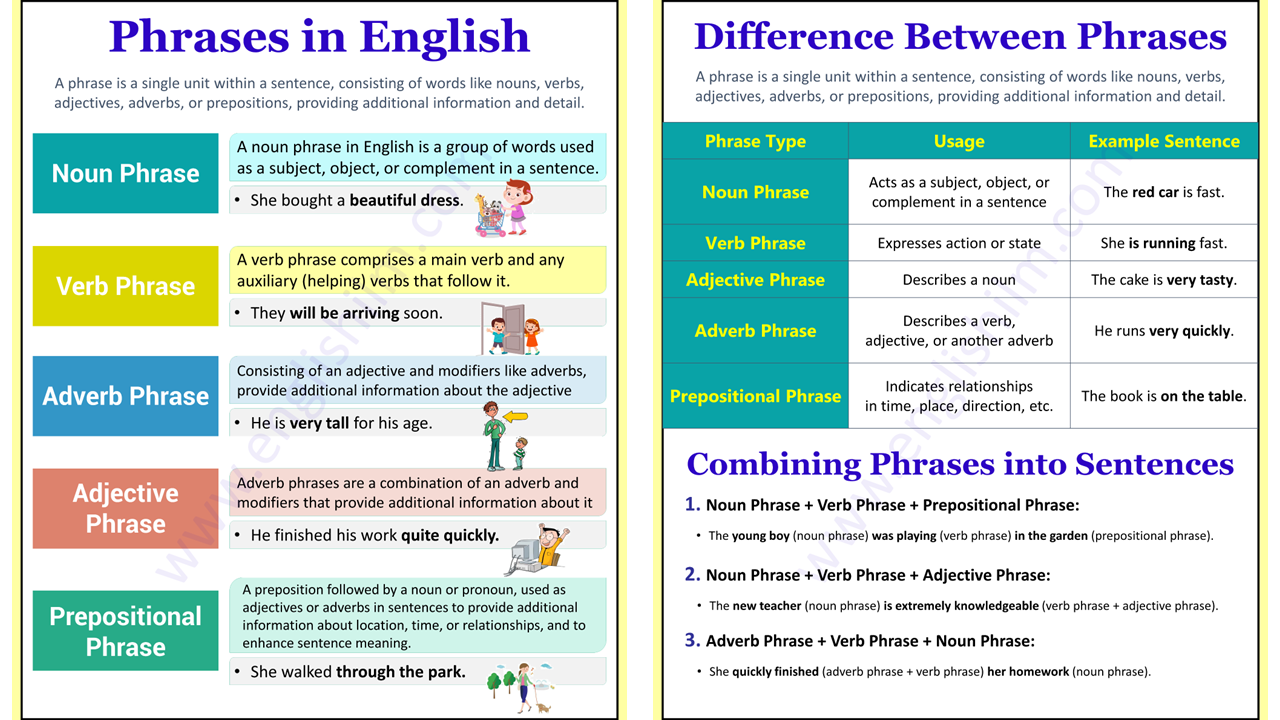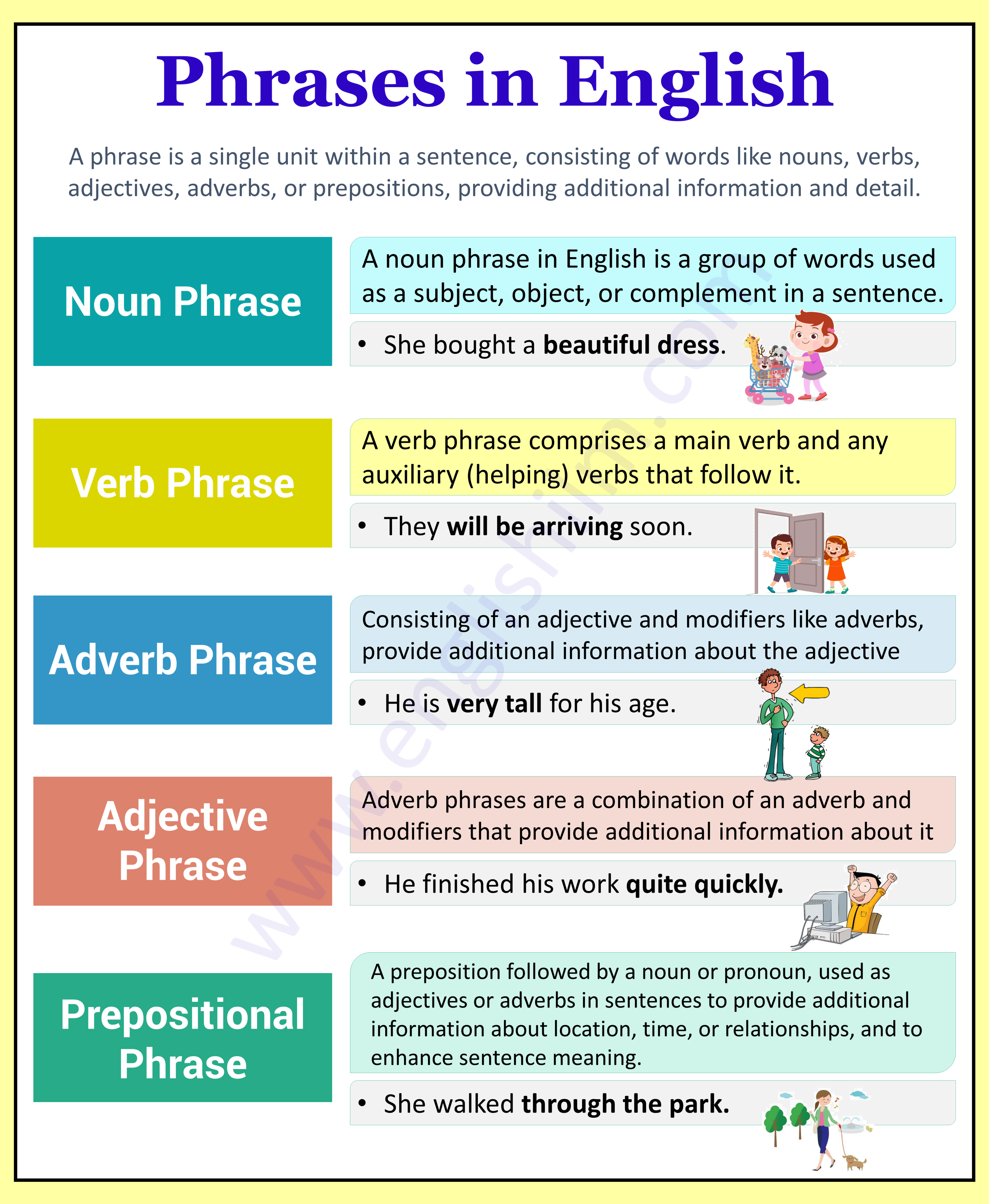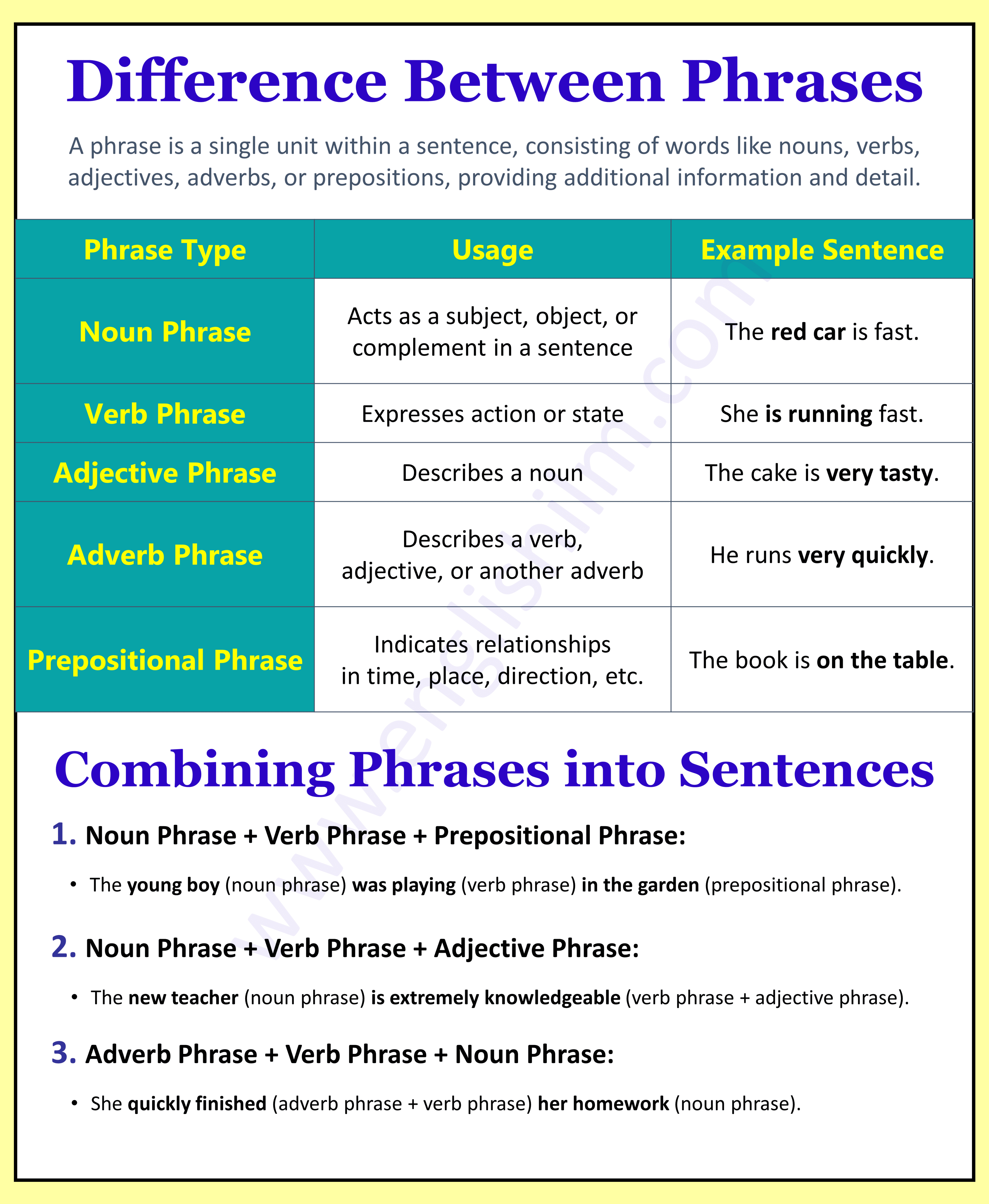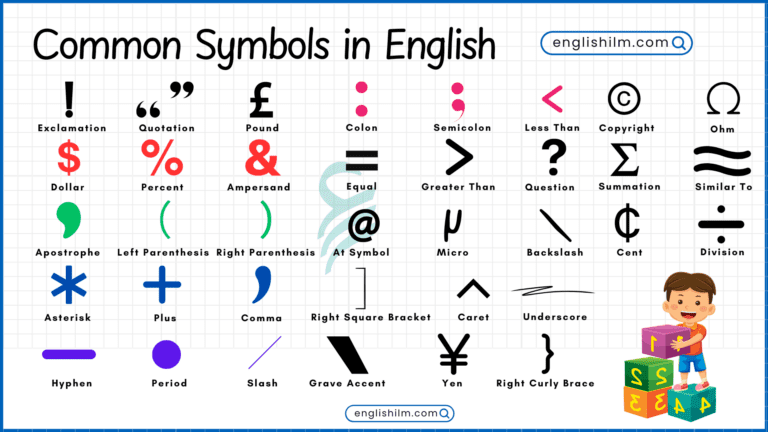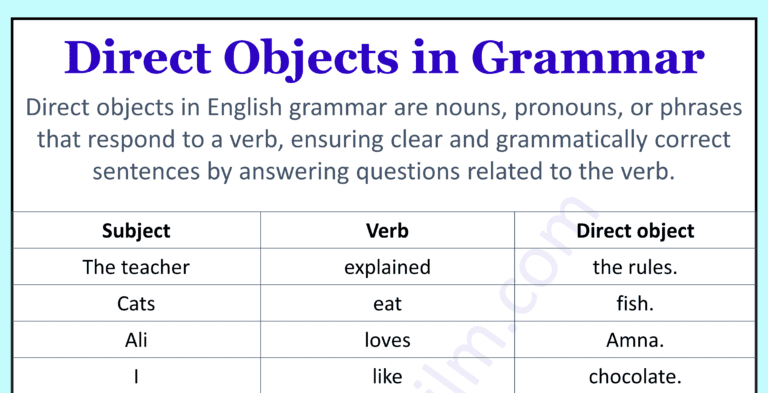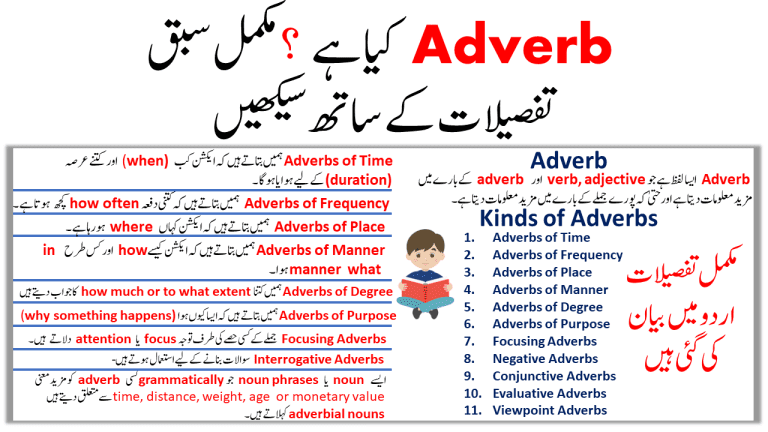In this article, you’ll learn about five types of English phrases—noun, verb, adjective, adverb, and prepositional phrases. These phrases are key to building meaningful sentences and improving your grammar skills. We will explore each type, their structure, and provide example sentences to help you understand their role in everyday conversation. By mastering these phrase types, you’ll enhance your ability to form clear and grammatically correct sentences in English.
What is a phrase?
A phrase is a group of words that acts as a single unit within a sentence. It does not contain both a subject and a verb, so it cannot stand alone as a sentence. Phrases can serve various roles, such as providing more detail or information. Depending on the types of words included, there are different types of phrases, such as noun phrases, verb phrases, adjective phrases, adverb phrases, and prepositional phrases. Each type adds clarity, description, or function to the sentence.
For example:
- Noun phrase: The blue car is mine.
- Verb phrase: He has been waiting for an hour.
Five Types of Phrases
Here’s the list of five types of phrases:
- Noun Phrase
- Verb Phrase
- Adjective Phrase
- Adverb Phrase
- Prepositional Phrase
1. Noun Phrase
A noun phrase in English is a group of words used as a subject, object, or complement in a sentence, as seen in the example sentence “The big brown dog chased the squirrel up the tree.”
Check out these examples to understand noun phrases better. To form noun phrases, we use this method:
Noun Phrase = Modifier (s) + Noun
Using the method above, we created these examples:
- The quick brown fox jumps over the lazy dog.
- She bought a beautiful dress.
- All the students in the class passed the exam.
Read more about: Noun Definition 12 Types and Examples
2. Verb Phrase
A verb phrase comprises a main verb and any auxiliary (helping) verbs that follow it. Check out these examples to understand verb phrases better. To form verb phrases, we use this method:
Verb Phrase = Auxiliary Verb (s) + Main Verb
Using the method above, we created these examples:
- She has been reading the book all day.
- They will be arriving soon.
- He can speak three languages fluently.
Read more about: Verb Definition Types and Examples
3. Adjective Phrase
Adjective phrases, consisting of an adjective and modifiers like adverbs, provide additional information about the adjective, such as “extremely tall,” where the adverb “extremely” modifies the adjective “tall,” enhancing the depth and specificity of writing descriptions.
Formula for Adjective Phrases:
Adjective Phrase = Modifier (s) + Adjective
Using the method above, we created these examples:
- The cake is extremely delicious.
- He is very tall for his age.
- The movie was quite interesting.
Read more about: Adjective Definition Types and Examples
4. Adverb Phrase
Adverb phrases are a combination of an adverb and modifiers that provide additional information about it, such as “very quickly” modifying “quickly.” They can enhance the specificity and detail of the verb or adjective they are modifying.
Formula for Adverb Phrases:
Using the method above, we created these examples:
- She sings very beautifully.
- He finished his work quite quickly.
- They responded surprisingly well.
Read more about: Adverbs Definition With Examples
5. Prepositional Phrase
A prepositional phrase is a preposition followed by a noun or pronoun, used as adjectives or adverbs in sentences to provide additional information about location, time, or relationships, and to enhance sentence meaning.
Formula for Prepositional Phrases:
Prepositional Phrase = Preposition + Noun Phrase/Pronoun
Examples:
- The cat is under the table.
- She walked through the park.
- They are coming with us.
Explore more: Prepositional Phrases in English
Combining Phrases into Sentences
Combining multiple phrases effectively can result in complex and rich sentences, as shown in the examples provided.
1. Noun Phrase + Verb Phrase + Prepositional Phrase:
- The young boy (noun phrase) was playing (verb phrase) in the garden (prepositional phrase).
2. Noun Phrase + Verb Phrase + Adjective Phrase:
- The new teacher (noun phrase) is extremely knowledgeable (verb phrase + adjective phrase).
3. Adverb Phrase + Verb Phrase + Noun Phrase:
- She quickly finished (adverb phrase + verb phrase) her homework (noun phrase).
Combining various phrases enhances writing by creating engaging and informative content, as they serve as crucial building blocks for clear, precise, and varied sentences.
Difference Between English Phrases
In this section, we have shortened the English phrases and their types to make them easier to remember and read.
| Phrase Type | Description | Usage | Example Sentence |
|---|---|---|---|
| Noun Phrase | Contains a noun and its modifiers | Acts as a subject, object, or complement in a sentence | The red car is fast. |
| Verb Phrase | Contains a main verb and auxiliary verbs | Expresses action or state | She is running fast. |
| Adjective Phrase | Contains an adjective and its modifiers | Describes a noun | The cake is very tasty. |
| Adverb Phrase | Contains an adverb and its modifiers | Describes a verb, adjective, or another adverb | He runs very quickly. |
| Prepositional Phrase | Contains a preposition and its object | Indicates relationships in time, place, direction, etc. | The book is on the table. |

